Hi everyone, Michael here taking a look at how the shooting phase has changed over the years in 40k. For more reviews, analyses and battle reports, check out the Tactics Corner.
The shooting phase has always been a major component of 40k. It has seen some radical changes since the early days of second edition, with each new edition of the game seeming to increase the power of this particular phase. The most recent rumours released by Games Workshop seem to imply that some aspects of 2nd edition may be returning to the game, so it is interesting to me to look back and see where we have come from.
Most players with agree that it is one of the most powerful phases in the game, with many games being decided in the shooting phase.
Second Edition (1993-1998)- Modifying your Success
The rules for the shooting phase in 2nd edition 40k are quite different to the current state of the game. All models were restricted to a front 90 degree firing arc, meaning that model placement and positioning was even more important in 2nd edition than in the current game. True Line of Sight was also used in this edition, with the effects of cover affecting the To Hit values for units. For example, soft cover (such as hedges, shrubs and most vegetation) incurred a -1 To Hit penalty, whereas hard cover (walls, buildings, craters, etc) incurred a -2 To Hit penalty.
The actual system for determining whether a unit was hit has remained unchanged since this time. The ballistic skill value of a unit was used to determine the die roll required for the shot to be successful. For example, a Space Marine attempting to shoot an Ork behind soft cover would require a 4+ to hit (a ballistic skill of 4 requiring a 3+, with a -1 penalty for soft cover).
In 2nd edition, units had to shoot at the closest enemy unit. However, units could ignore enemy units in cover or units that were fleeing. In addition, units could choose to ignore or specifically target enemy vehicles. This meant that cheap screening units were of particular importance in 2nd edition, as these units could be used to shield more valuable units in your army from enemy fire power. Also, the target would have to be chosen without measuring the distance between the units. If the enemy unit was out of range, then the shorts were wasted. This meant that estimating the distance between your units was a very valuable skill to have in 2nd edition 40k, as poor guessing of distances resulted in more wasted shots in the shooting phase.
What was interesting was that models in a unit with special or heavy weapons could choose to target a different enemy unit in the shooting phase. This meant that all units in your army has an inherent form of split fire. To complicate matters even further, fire could be split between multiple enemy units depending on how your own models in the unit were positioned and how they were armed.
The To Hit chart remained the same as it has always been (7-BS). As mentioned above, different cover provided different penalties to hit in the shooting phase. Different weapons also provided bonuses or penalties to hit depending on the range of the target unit. In addition, the speed of the target enemy unit also had an effect on the to hit penalty, with further negative penalties to the roll for fast-moving units.
The To Wound damage table was also similar to the currently used table. Strength and toughness values were used to determine the roll required to wound. As expected, saving throws were taken against any wounds caused. However, the armour save was modified by the strength of the weapon, as well as other additional modifiers. As a general rule, the armour save was decreased by one for each point of strength above 4 (e.g. Strength 4 incurred a -1 penalty, strength five incurred a -2 penalty, etc.). More powerful weapons could incur even larger armour penetrating penalties to the save. This system also allowed for different types of saving rules to be used. For example, Terminator armour was a 2+ save on 2D6. This meant that Terminator armour was immune to weapons that were strength 3 or below, or weapons that did not modify the armour save.
Much like the current edition of the game, casualties were removed from those models closest to the firer. In addition, units could fire into Close combat, but hits where randomised between the two combatants. This means firing into combat was a useful tactic, but at the risk that you could harm your own units.
Also, much like the current game, units could not move and fire with certain weapons (generally what would now be considered heavy weapons).
Having a Blast
Much like in the current edition, more powerful weapons used blast markers to inflict higher casualties on enemy units. Unlike the current edition, blast markers were not limited to two standard sizes. A number of different template shapes and sizes could be used for different weapons. With a blast weapon, players would roll to hit as normal. If a hit was scored, the player would place the blast marker centred over one model. All models under the template were hit, any models partially under a template were hit on a 4+. If the shot was missed, the blast marker would scatter. Players would roll the scatter dice and artillery dice to determine where the blast would land. If a misfire was rolled on the artillery die, this could result in the shot being a dud or even the weapon exploding in some cases. One interesting aspect of this system was that the scatter was limited to five inches.
Grenades could also be thrown in the shooting phase. This was not limited to one grenade per squad. The range of the thrown grenades depended on the strength of the thrower (up to 12” for S5+).
Also, much like the current edition, template weapons required no roll to hit and were unaffected by cover.
The concept of sustained fire was also used for more powerful multi-shot weapons. Players could fire multiple shots at multiple targets determined by rolling the sustained fire dice. Its shots would need to be allocated within 4 inches of the original target, however, the more powerful weapons had a chance of jamming if a jam symbol was rolled on the sustained fire dice. This was a trade-off for having more shots with the weapon at the risk of not being able to fire the weapon in the following turn.
Overwatch
2nd edition also had a version of overwatch fire. This allowed you to forgo shooting in your own turn in order to be able to shoot in your opponent’s turn. Units that decided to go on overwatch in their own turn could do nothing else for the rest of that turn, not even moving.
Units in overwatch were allowed to fire in the enemy shooting phase at any time, before or after the enemy unit had moved. Units in overwatch could even shoot at units between moving, i.e. shooting at an enemy unit that had moved from one piece of cover to another. Units in overwatch suffered an additional -1 penalty to hit for overwatch fire, in addition to any other penalties from shooting. You could even fire at a charging enemy unit. If a unit that was in overwatch was fired upon, it had to take a leadership test. If failed, the unit would lose their overwatch counter and would be unable to fire.
Overwatch was a very powerful ability in second edition. It enabled you to react to your opponent’s movement phase and battle plans and fire upon them as they attempted to manoeuvre. This meant you could fire on enemy units as they moved into Line of Sight from behind cover or you could fire at enemy units as they closed range with your own units, or even if they were attempting to charge into combat. This made deciding what units went into overwatch an important tactical part of the game, as you would suffer a to hit penalty, but in exchange could potentially disrupt your opponent’s battleplans.
Overall
The shooting phase in second version was a highly complex affair. Frequently, you would need to resolve the shots from a single unit individually due to all the different modifiers from different ranges, cover types, weapon types, etc. There was also the added complexity of one unit being able to shoot at multiple different targets. Fortunately, armies were much smaller in 2nd edition than in the current edition. However, this added level of complexity meant much longer games even for these smaller army sizes. As with all aspects of the game, third edition saw a dramatic simplification of the rules for the shooting phase.
Third Edition (1998-2004)- Back to Basics
As with much of 40k, the release of third edition saw big changes for the shooting phase. One of the biggest changes was that To Hit modifiers where removed from the game to simplify shooting attacks. The firer always used their base ballistic skill (in most cases), to determine if a shot was successful. This served to dramatically speed up gameplay by allowing players to roll all shooting dice at once, rather than have to roll for each individual model in a unit.
The unit was restricted to firing at a single target, so no more targeting separately with bolters the infantry and firing at an enemy vehicle with a Lascannon. Players now had to choose whether to waste Bolter shots going after enemy armour or to target enemy infantry and potentially waste the Lascannon shot on a single infantry model. This added a further layer of tactical play to the game.
Line of Sight was no longer blocked by models in your own unit (except vehicles) and Infantry models were not specified to have a filing arc. It was assumed that all Infantry had a 360 degree field of vision.
As with second edition, ranges for weapons could not be measured. Players still had to estimate if a unit was in range of their guns. Only models in the weapon’s range could be hit and could be removed as a casualty.
Rolling to hit and to wound were the same as in the current edition. To hit modifiers where no longer a part of the game. In a further change, shooting casualties were removed by the owning player. This allowed players to choose to keep leaders and/or special weapons alive when taking enemy fire. This decreased part of the emphasis on model placement, as players could simply choose whether to keep certain models alive or not as long as others were in range of enemy guns.
The concept of armour penetration (AP) was also introduced. Saving throws where no longer modified by the strength of the weapon being fired. The target unit now either got the full armour save or their armour save was completely negated. This made units such as space marines much more powerful, as generally only selected special or heavy weapons could entirely remove their armour saves.
The concept of instant death was also introduced. If a model was wounded by a weapon with a strength of double its toughness, the model was killed outright (assuming it failed its save). This meant that more powerful, high strength weapons that were previously able to inflict multiple wounds were still able to kill multi-wound models in one shot.
The effects of cover on shooting were now taken into account in the form of cover saves. Whereas before, cover had an effect on the ability to hit the target, terrain now provided additional protection for models that were in cover. Models now received a saving throw based on the type of cover that they were in (generally 5+). As in the current edition, cover saves could only be taken instead of armour saves. In a similar vein, invulnerable saves where introduced that could always be taken, regardless of the AP of the firing weapon.
Weapon Types
3rd edition also saw the myriad of ranged weapons consolidated into various different weapon types. These weapon types gave general rules for the different ranged weapons in the 41st millennium.
Rapid fire weapons were the general weapon type for many of the Infantry units in the game. If the unit moved, the unit could fire one shot up to 12″. If the unit remained stationary, it could fire twice up to 12 inches and once up to full range over 12 inches. The heavy weapons type represented larger rate of fire weapons. Units armed with heavy weapons could not move and fire. Assault weapons were more mobile firearms, a unit moving suffered no penalty when firing assault weapons. Template weapons such as flame weapons were larger area of effect, the models under the template were all hit. The effects of cover was ignored on template weapons and only models under the template could be removed as casualties.
Blast weapons were introduced with two blast types; small blast and large blast. The player would roll to hit as normal. If a hit was scored, the player placed the blast marker over the target. Models fully under the blast were all hit, models partially under the blast were hit on a 4+ and only models under the template could be removed as casualties. Interestingly, the target player was allowed to move the blast marker, as long as the blast was still in range of the weapon and covered the same number of models. This allowed the targeted player to potentially save specialist weapons or squad leaders from being unfairly targeted by the Blast.
Barrage weapons were also introduced. These weapons were guess range. Players had to guess the range to the target and the shot also scattered a further D6″. Again, this meant being able to estimate the distances between units was a valuable skill in third edition.
I remember playing games at my local Games Workshop on a 4×4 board, where my whirlwind could cause havoc with some surprisingly accurate firing. Many veteran players were able to develop pinpoint accuracy on their guess range blast weapons over time.
In addition to the weapon types, some weapon effects were also added to the rules. For example, melta weapons got an additional D6 armour penetration, while sniper rifles always hit on a 2+ and wounded on a 4+.
Plasma weapons gained it gets hot rule. On a 1 to hit, models suffered a single wound but got to make an armour save.
3rd edition greatly simplified the rules for the shooting phase in 40k. Along with the other rules simplifications, this enabled much larger games of 40k to be played in the same time scale relative to second edition. Many of the concepts introduced in this edition continue to make their mark on the game today.
Fourth Edition (2004-2008)- Firefight Frenzy
The release of 4th edition saw a number of changes implemented to the shooting phase, the most major changes affecting the use of screening units and rapid fire weapons. Units now had to fire at the closest enemy unit, unless they could pass a leadership test. Enemy units that where locked in combat or were falling back could be ignored as the closest enemy units. Equally, enemy vehicles and monstrous creatures could always be targeted as the closest enemy units due to their larger presence on the battlefield. This made the leadership characteristic more important for units than simply for morale purposes. Units with higher leadership values represented more combat-savvy units that allowed for more tactical flexibility.
” The change was necessitated by the excessive dependence players place on screening. That is, the practice of putting an expendable unit in base to base formation in front of a far more expensive unit…… These tired old tactics are now dead and gone. In the revised-edition a unit must always fire at the closest target unless it makes a successful leadership test in which case it can choose who to shoot at. Line of Sight is only blocked by terrain, vehicles and monstrous creatures. As you can imagine this makes leadership even more important.
This obviously has a very significant effect. Anything that is firing at the enemy is subject to being shot at in return. Tactically this will provoke a different approach. It is now more important to present a range of threats to draw off the enemy’s fire. Skirmish lines can now be spread out so that they look like, well, skirmish screens, and should be effective in drawing some of the enemy’s fire from your key formations.” Pete Haines, Designer’s Notes, White Dwarf 297.
Now Line of Sight was no longer blocked by most enemy units, it could still be blocked by vehicles, monstrous creatures and area terrain. Units could not see past 6 inches of area terrain, meaning that ruins and woods could still block enemy fire. Area terrain also added to the complexity of cover saves. Height ranges were now split into three levels; size 1, 2 and 3. This had an effect on which models were able to claim cover saves from certain terrain features. For example, monstrous creatures (size 3) could claim cover saves from size 2 terrain, but not from size 1 terrain. This added further complexity to the cover save system.
The other major area of revision in 4th edition was in how rapid fire weapons functioned. In third edition, the penalties to moving and firing rapid fire weapons meant that units armed with these weapons tended to have a more static role in the game.
” The next most radical step involves rapid fire weapons. It had been clear for some time that this category of weapons was not well regarded…….. Something had to be done though. If there is one seminal, iconic image in Warhammer 40,000 it is of a Space Marine, legs braced, firing his bolter from the hip. Not clubbing his opponent to death with it.
This solution was to permit rapid fire weapons to be fired twice at close range even if the firer had moved. Immediately close range firefights started becoming much more common in our playtest games.”
“Under the revised rules rapid fire weapons are not a sentence to be immobile for the whole game. Units that get into the right positions can do serious harm without depending totally on their squad’s heavy weapon. The only downside is that if you shoot rapid fire weapons then you cannot charge that turn.” Pete Haines, Designer’s Notes, White Dwarf 297.
The new rapid fire rules allowed units to fire twice up to 12″ whether they had moved or remained stationary. Alternatively, if they had not moved, they could fire once up to the full range of the weapon. This made close range firefights more powerful in 40k, and encouraged players to close with the enemy in order to unleash more devastating volleys of fire. This rule effectively doubled the effectiveness of rapid fire weapons. Needless to say, my Orks were not fans of this change in 4th edition.
These rules changes meant that armies could not rely on large numbers of screening units, and that close range firefights became deadlier in 40k. These changes saved to make the shooting phase and even more powerful force in the game.
Fifth Edition (2008-2012)- Run, Ultramarine, Run!
The release of fifth edition saw more major changes to the shooting phase. One of the most impactful changes was that the game now used true Line of Sight. Players no longer had to be concerned about the effects of area terrain or which enemy units blocked other enemy units. If you could see it, you could shoot at it.
Another major change to the shooting phase in fifth edition was the addition of the run move. This enabled units to forgo shooting a ranged weapon in order to move an additional D6″ in the shooting phase.
Previously, units with the fleet special rule were allowed to move in the shooting phase, but now all armies had access to this ability. Models that ran were then unable to assault (unless they had the fleet special rule).
This finally gave units that had no ranged weapon or that were better suited for combat, a role in the shooting phase. Players could use the new run rule in order to close the distance with the enemy unit quicker and hopefully cause more damage in combat as a result.
Players still had to estimate the range between units has no pre measuring was allowed.
Rolling to hit worked as normal. However, ballistic skills over 5 were now given an additional chance to hit if the first To Hit roll was a one.
Cover saves werealso improved in this edition, in order to compensate for the increased shooting ability of armies thanks to true line of sight.
“To compensate for the increase in shooting, I’ve improved cover saves, both in terms of who gets them and the protection they offer. Now, more often than not, cover saves will confer a 4+ save. More dramatically, shooting through intervening squads, whether friend or foe, automatically awards the target a 4+ cover save.” Alessio Cavatore, A Time For Change (5th edition design notes), White Dwarf 343.
Shooting through units (friend or foe), ruins, walls and forests/ woods gave a 4+ cover save. In addition, units could now go to ground. This granted a +1 to any covers saves that the unit had (6+ in the open), but the units could not do anything else that turn.
The rules for removing casualties also changed. Players assigned each wound to a different member of the squad until all the wounds were allocated. They then rolled saves for each type of model in the unit (i.e. models in the unit with the same stats and wargear). This allowed players to try and save models with different weapons or character models, though there was still a chance they would be lost if the opponent caused sufficient damage.
This also allowed players to “ignore” wounds. In the example in the rulebook, players were able to ignore a wound if all of the models of a “type” where killed and there were excess wounds allocated to that type.
Models could be removed that were out of weapons range or Line of Sight, as long as least one model in the unit was in range. Firepower in the shooting phase became much more punishing, you only needed one enemy model in range of your guns in order to wipe out the unit.
The problem with multiple Organisms!
Multi-wound models were the cause of multiple problems with 5th edition. For multi-wound model units, you would allocate wounds based on different stats and wargear. You had to remove whole models when possible, but only within each model type. This made it easier for players to spread wounds over multiple models in the unit to ensure that they remained at peak effectiveness for longer. All you had to do was ensure that they were armed differently. For example, a unit of 5 Nobs would not lose a model until 6 wounds had been caused on the unit, as long as each was armed slightly different.
Nob bikers were particularly notorious for this in 5th edition. A unit of Ork nobs on bikes could take a painboy and all be armed with different wargear. This unit could suffer a wound for every model in the unit before any model was removed. As a result, it could tank a lot of wounds.
The unit had T5, a 4+ armour save and a 4+ feel no pain roll. Players needed a very high volume of fire or high strength weapons to take them out. However, in 5th edition, the +1T bonus for the bikes did not count towards instant death and feel no pain was negated by instant death and AP1 or AP2 weapons.
These sort of wound allocation shenanigans on multi-wound models was often cited as one of the major problems with 5th edition.
Another major change to the shooting phase in fifth edition was how blast weapons functioned. Previously, blast weapons had to roll to hit much like other ranged weapons. A successful hit would still cause the blast to scatter a short distance. However, a miss would cause the blast to do no damage at all.
In 5th edition, the rules for blast weapons change that they no longer needed to roll to hit. The blast was now placed over the target unit, and scattered 2D6″ minus the ballistic skill of the firer. This made all blast weapons, particularly large blast weapons, more potent as they had an increased chance of hitting. In addition, wounds from the blast did not have to be against models under the blast marker, wounds could be allocated to any model in the target unit. This stopped blast weapons being used to “snipe” out special models in the target unit.
My memories of the 5th edition shooting phase was one that was dominated by very good cover saves and multi-wound model problems. This edition tended to feature a lot of cover-heavy tables and static shooting armies.
Sixth Edition (2012-2014)- Snap Decisions, a (Pre-)Measure of Success
The release of sixth edition in 2012 saw perhaps the most dramatic change to the game since the change from 2nd edition to 3rd edition; the introduction of pre-measuring. Previously, weapon ranges and assault ranges had to be estimated by the player. No doubt many veteran players were upset by this addition to the rules, however, I think most would now agree in retrospect that this was a welcome change to the ruleset. This change led to faster games and more tactical play in some respects. The game was no longer a guessing game, you could accurately know if a firing unit was in range. This helped the game to focus more on movement and tactics, rather than having the game decided by one player being better at estimating than the other.
Even though this change only occurred around 5 years ago, it is hard to remember what the game was like when you had to guess almost everything.
Another big change was that the concept of “snap shots” was introduced. This helped to add additional utility to many of the units in the game. It allowed heavy weapons to fire on the move, so heavy weapons with a high rate of fire were more useful more often.
The process of shooting at a target unit and wounding the target unit were generally unchanged.
However, another major change was brought about in the way that casualties were removed from the target unit. The big change was that casualties were now taken from models closest to the firing unit. Model placement within a unit became more important, as models with different wargear and character models had to be placed with care, lest they fall foul to enemy firepower. Models out of weapons range were allowed to be removed as casualties, models out of line of sight were not.
The Look Out, Sir rule was introduced in order to help characters survive enemy firepower. This took the form of a 4+ save for Sergeant-type characters, and independent characters got a 2+ save. This allowed players to pass on more “harmful” wounds to other members of the squad and to save important characters from harm. The addition of closest model wounding and Look Out Sir rolls made wound-tanking characters even more popular in 6th edition.
This allowed a character with improved toughness, armour save and/or invulnerable save to soak up wounds for an accompanying unit by being placed at the front of the unit. The character could soak up wounds that would shred the unit, using Look Out Sir rolls to pass on wounds too hazardous to attempt with the character.
This had the disadvantage of seriously slowing down gameplay under certain situations. Any player that has attended a tournament-type game, or even a casual game, will know the frustration when 20+ wounds have to be rolled individually due to the presence of a tanking character.
Cover
The effectiveness of cover saves was also reduced in 6th edition, as cover was far too effective in 5th edition 40k. The biggest change was that cover was generally reduced to a 5+ save, where a 4+ save had been more common in the last edition.
Going to ground was still permitted, the units that went to ground could still fire snap shots. This made it a tempting proposition for units with a high rate of fire and a low ballistic skill to go to grounds for increased cover saves, but still fire effectively. For example, Ork Lootas had little to lose from going to ground and snap firing.
In order to mitigate this, focus fire was introduced. This allowed you to target more vulnerable models with poorer cover saves at the risk of losing excess wounds.
In a similar vein, precision shots where now introduced for character models and certain weapons. A roll of a 6 to hit allowed the player to assign any wound caused to a specific enemy model. This allowed characters to try and take out heavy or special weapons troopers preferentially.
Weapon Types
Rapid fire weapons became even more effective in 6th edition. There was now no longer any penalty when moving and firing. This served to increase the effective range of most rapid fire weapons, making them very potent in the hands of the skilled infantry. Much like in the current edition, you could move and fire the weapon at full range or gain two shots at shorter range.
Salvo weapons were also introduced; weapons with a very high rate of fire if stationary, but less effective on the move.
Template and blast weapons could not snap fire, however, heavy weapons could. This made it possible for heavy weapons to be more effective on the move. These units were no longer limited to a purely stationery role, but could potentially move and still cause some damage.
Overwatch
The concept of overwatch fire was also be introduced, though this worked very differently to the rules seen in second edition. Units that were assaulted were now able to snap fire at the charging enemy unit.
The new changes to the shooting phase hit assault armies hard. Previously, you could remove casualties from the rear of a unit so as not to lose any range on the enemy. Now, you had to remove the closest models possibly increasing the distance to a target unit. Overwatch fire also made it more hazardous to charge into assault, with the potential that overwatch casualties could now result in a failed charge.
Seventh Edition (2014-current)
Like many phases in the game, 7th edition saw a refinement to the shooting phase rather than massive overhaul. These new rules sought to clarify certain rules issues that had occurred with previous editions of the game.
One such issue that underwent clarification was the order in which weapons are fired in the shooting phase. Previously, most players had assumed that all the weapons firing in a unit occurred simultaneously. As long as a weapon was in range at the start of the unit’s shooting, it was assumed that any casualties that took the weapon out of range would be unaffected.
However, 7th edition specified that shooting took place with one weapon type completely before moving onto other weapon types in the unit. This required players to carefully choose in which order their unit’s attacks would occur, as previous shooting could take certain weapon types out of range. The rules also specified that each weapon was not required to fire, in fact, players could choose not to fire with specific weapons if they so wished.
Another important clarification was that movement affected shooting on a model by model basis. Previously, every single member of a counted as moving if any member of the unit had done so. Now, however, with movement being determined on an individual basis, this allowed certain models in the unit to move to more favourable firing positions, whereas other models, such as those carrying heavy weapons, could remain stationary to fire at full effect.
Despite the clarifications, the ability of powerful independent characters to tank wounds for a unit was still in place. Again, this had the effect of sometimes slowing down game play during the shooting phase.
Looking to the Future
Interestingly, the most recent rumours from Games Workshop concerning 8th edition appear to be revisiting concepts from earlier editions of the game. Armour save modifiers are apparently going to be making a comeback in the next ruleset. While this is going to be an interesting development, I don’t think that such modifiers will be as powerful as they were in the second edition. These were often used in conjunction with To Hit modifiers, meaning that it was more difficult for shots to reach the target unit. Without to hit modifiers making a return, armour save modifiers would be more potent than they were in the second edition. Perhaps these types of modifiers will be restricted to more powerful weapons in the 41st millennium. I would assume that such armour save modifiers would be based on the strength of ranged weapons, making such modifiers easier to remember if you know the weapon’s strength. Otherwise, you will need to memorise the armour save modifier for each individual weapon, adding further complexity to the game.
Without a doubt, the shooting phase has seen many changes over the course of the last 5 editions, remaining one of the most powerful phases in the game. It will be interesting to see how this further changes in the next edition with the decrease in rules complexity that many players are anticipating will occur.
I think that most players would agree that the shooting phase has remained one of the most powerful phases in the current game. 7th edition has seen shooting-focused armies prosper under the current ruleset, whereas close combat-orientated armies have suffered, as they have done for several editions.
So that is a brief history of the shooting phase in 40k. Which changes or modifications would you like to see in the new edition of the game?


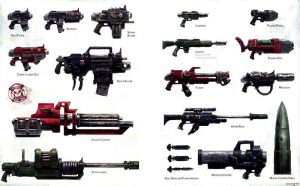
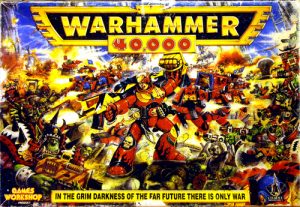
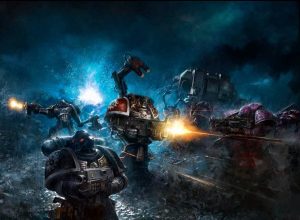
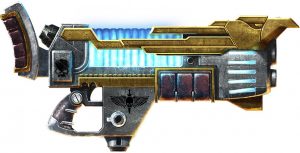
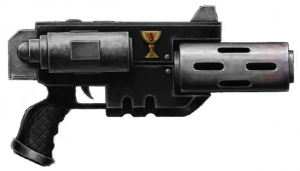
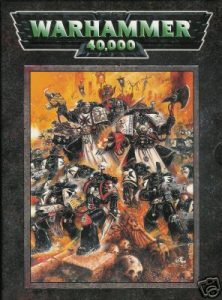

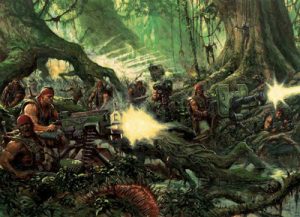
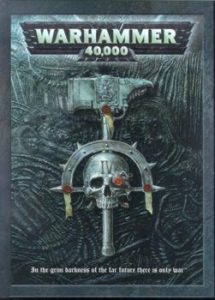

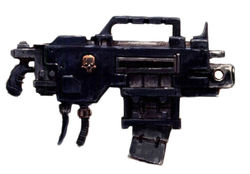
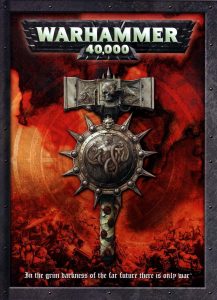

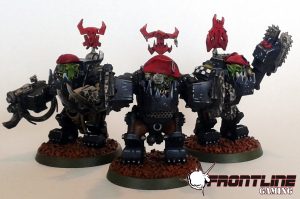
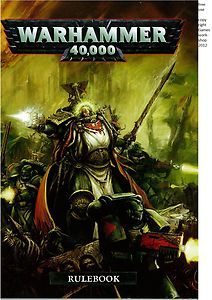
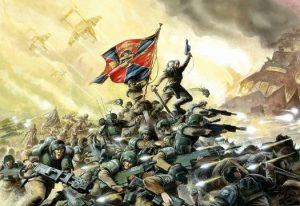
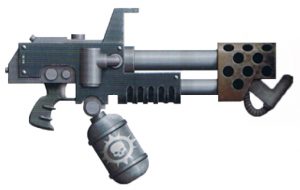
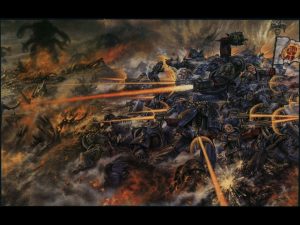
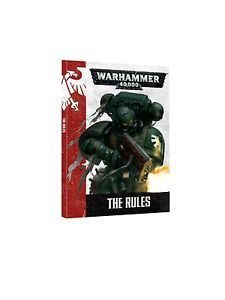
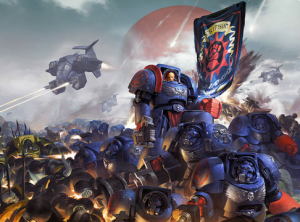

I’ve really been enjoying this series. Looking forward to the one on vehicles that is surely coming up!
I’ve been saddened edition after edition at how much weaker close combat has become in comparison to how strong shooting as become. I’m hoping they make the question of whether or not to move more meaningful, as choosing to “not move” is faster than choosing to move. Specifically, I’d like to see a return to losing your range with rapid fire when moving (though keeping 2 shots at close range). I’d also like to see being able to fire everything simultaneously again with casualties selected by the player taking the hits (but only being able to remove models that can be seen), and thus removing Look Out Sir from the game (which also makes Precision hits more interesting).
An extra thing I’d like to see is for units that arrive from Reserves to only be able to Snap Shot the turn they come down to bring this more in line with units not being able to charge out of Reserves.
Guess we’ll see what happens.
Hi Davis, glad you have been enjoying them.
I have already taken a look at the evolution of the vehicle rules. You can find the two articles at:
https://frontlinegaming.org/2016/09/24/armoured-fury-the-evolution-of-vehicles-in-40k/
https://frontlinegaming.org/2017/04/10/all-aboard-the-evolution-of-transport-vehicles-in-40k/
I’m not sure about the return to losing rapid fire range on moving. I remember armies being very static in 3rd edition due to this. I like having my units advance and keep firing on the move.
Snap shooting from reserve is a very interesting idea. It would certainly tone done some of the reserve-heavy armies such as Drop Pod lists.
Allowing rapid fire weapons to shoot to full distance when moving was a HUGE change for the game and made things far more mobile- it doesn’t seem like a big deal, but try the game out without it and you’ll find that you do a lot less shooting.
Young players don’t know the fear of looking across the table and seeing a couple of Devastator units in overwatch mode.
They also don’t know how long a game of 40k with many fewer models could take.
Moving from 2nd Edition to 7th Edition was hard for me. Even though fifteen years had passed, I still had trouble with a number of rules like units being able to shoot when they were lined up correctly in the 90 degree arc. And how useless cover had become compared to before when you benefitted from both cover *and* your armor value.
I’d love to see some 2nd Edition aspects come back. Not all though. It was too fussy at times.
Shooting the nearest unit is frustrating.
No pre-measuring is the worst. I get how it makes sense, but try playing that way against a carpenter, an electrical engineer, or someone who plays a lot and is very visual/spacial. Big disadvantage.
I’d like to see cover modifying to-hit rolls again, either -1 or -2. And basic weapon strength modifying armor.
I think the introduction of pre-measuring was one of the best changes made. Although I sometimes get nostalgic for the old days, it makes things way easier.
I think that armour modifiers are going to be making a comeback, at least based on the rumours posted on the GW community page.
Sounds like you would want to harken back to 2nd edition…I mean play the new Shadow Wars game!
One of these days, I kind of want to try no pre-measuring casually. Just because I am an engineer haha
“Well, I guess I have to shoot at the nearest target. I will guess that the range for my artillery shot is… ooh, say, forty inches towards those Guardsmen.”
“Dude, they are like ten inches away, tops.”
“Yeah, but your battle tank is probably about forty, and I actually wanted to shoot at it.”
No premeasuring (as well as guess-range weapons, etc) really gameify things to an unpleasant degree. It adds a serious skill barrier to being able to effectively play the game; being bad at the guessing-ranges skill is really, really unfun and being good at it is actually kinda boring.
I totally agree. It might be fun to go back and play the odd game without pre-measuring, but bringing it into the game was a big improvement.
Interestingly enough, I think the single biggest changes to the shooting phase were not related to the shooting phase rules at all. In previous editions, it was much easier to get units into combat, with rules like fleet, a standard charge distance, no overwatch, and being able to charge out of transports or out of reserves. Not to mention flyers, who are immune from melee altogether!
Melee units now have a much more difficult time even getting into close combat, meaning that if you weren’t killing models in the shooting phase, you often weren’t killing them at all!
From my recollection of 4th Edition, melee was really the more efficient way to build. There are very few lists who can still say that now, and typically they take advantage of a really powerful model or two.
Great article, I did skim some of it, but am coming back later for a deep dive.
Thanks Jural, glad you like it.
I think that 3rd edition was one of the most powerful for combat. You could sweeping advance from one combat to another and never get shot at most of the time. I think they did away with this in 4th edition. Can’t remember for certain though, I haven’t started researching my article on the evolution of the assault phase yet!
Consolidating into a new combat was removed between 4th and 5th editions- it was part of the suite of changes that make the game drastically different between the two, along with the changes to vehicle functionality (cover saves, damage table, effects on passengers, etc.)
pretty sure this article was out weeks ago in another blog
There are probably thousands of 40k blogs out there. I’m sure they have similar ideas every once in a while
Hi meh. I also published this article on my own blog, St Andrews Wargaming. I share some of the same articles here to give people a chance to read it if they don’t follow my personal blog. I’m also more likely to get comments and opinions from a range of different readers, which helps to improve my writing and provide new ideas for content.
The guys here at Frontline are aware that it has also been posted on another site.
I only started playing in 5th edition, but I like some of the old second edition ideas like cover save modifying hits and armor pen modifying save rolls instead of just ignoring. I’d like it if 8th revisited those rules.
I would also like Look Out Sir to go the way of the do-do. It basically makes precision shots useless unless you’re targetting a special weapons guy who is not a character.
I’m not sure about only snap shots after deep striking but maybe some sort of hit modifier would make sense (maybe -1 or -2 BS). I think snap shots would be too punitive because most of the usefulness of deep strike is the ability to alpha strike someone. It would become pretty useless if you couldn’t do that.
Look out sir is one of those rules I feel is nice in theory, but slows things down considerably in practice.
I’m not sure I would like to see the return of “to hit” modifiers. I like the system where you know flat out what a unit needs to hit. I don’t need any more arguments about which units are in cover!
As long as cover exists in the game, you’re always going to have arguments about who gets it and who doesn’t. Granted that argument won’t happen if the unit just gets to use its armor save anyway, but that’s not always the case even in the current system.
I just think it doesn’t make much sense at all that some units aren’t helped by cover at all. Just because I’m wearing thick armor, this wall I’m standing behind isn’t going to help me?
The problem with modifying to-hit numbers is not in the fiction, it’s in the application; it’s the same issue with armor save modifiers compared to AP just ignoring certain values of armor- it means that you have to add another layer of calculation to everything you do, and those add up very quickly.
The actual modifier itself isn’t hard, obviously- anyone who struggles with subtracting one from a thing is gonna be completely baffled by the rest of the game- but _cumulative_ modifiers, both positive and negative, along with remembering what you need for a given roll adds a layer of complexity to things. It’s fine in a game like Necromunda where you might only have a dozen models on the table, but when it’s 50+ models per side it becomes a LOT more unwieldy.
That said, AoS manages to make Rend values work reasonably well by limiting the armor saves of units and making modifiers the exception rather than the rule, so I can certainly see it being functional in 40K. Note, however, that AoS also abandons the idea of cover modifying to-hit rolls and instead applies it as a bonus to armor saves, which I think is a more sensible system.
I think the key is limiting them. Cover saves as mods isn’t too bad as long as it’s never more than -1 or -2. And making the cover have to be significant to get even the -1. I’d prefer the standard to be about 50% (-1) and “I’m in the ruins” (-2).
I can definitely understand that concern based on how many interactions there are, but there really aren’t that many Hit modifiers in 40k at the moment. There are snap shots but those are always BS1 so that’s pretty easy. Outside of that you basically just have Tau Markerlights (which, coincidentally enough, can also be used to ignore cover). So unless GW is going to throw a bunch more To Hit modifiers in there, I don’t think changing cover to modify hits is going to be all that difficult to handle.
Armor saves are in a similar spot, too. Very rarely will you see something that modifies armor saves in the current 40k environment. So changing AP to be a modifier probably wouldn’t lead to super complicated scenarios where you’re trying to keep track of 4 modifiers at once.
Currently there aren’t many hit modifiers, obviously, but if you’re changing the system so that cover adds a hit modifier you’re presumably changing other stuff as well. So -1 for cover, -2 for heavy/full cover, -1 for long range, -1 for fast target, -1 for various special pieces of wargear (Holofields, etc), -1 for a target moving Flat Out/Turbo, -3 for flying target… that’s just off the top of my head.
Again, it’s not that modifiers to dice rolls are particularly complicated. BUt its still adding another step to the rolling process that you’re doing a hundred times or more per game, and it’s one more thing to remember when you’re sorting out dice to see if they succeeded. If you’ve never played with that sort of modifier, it’s very easy to underestimate how much it affects things.
Personally I hope cover returns into a to hit modifier for ballistic skill. It makes more sense and tones down the shooting phase.
I hope invul saves get changed into a flat unrerollable save. Still modifiable to 2+ but unrerolable.
I also hope armour saves becomes modifiable by a weapons ap value of 0-1-2-3. Thus something like a las cannon can have a -3 modifier and turn a 2+ armour save into a 5+ save. However armour saves can be rerolled with the right buffs or abilities.
This will drastically reduce the amount of unkillable characters while keeping them as hard to kill targets and reduce the effect of shooting phase which currently is overloaded with str6/7 ap3 weapons.
It would make shooting without ignore cover considerably less effective.
Would remove a lot of invul reroll save nonsense without the need for itc 2+ reroll rules changes. And would make armor useful since weapons won’t always flat out ignore 4+ and 5+ armor saves.
TBH, it doesn’t much matter to me too much how it happens, but I do hope that there is greater parity in between shooting and assault in the next edition. I love chopping things up at close range but I dislike frequently losing, so those models/armies tend to gather dust and that’s sad
There are a lot of strong assault armies in the game right now- the problem is, they aren’t the _kind_ of assault armies that people want. A bunch of Berzerkers on foot is shit, but 20 Flesh Hounds with a Cabal is brutal.
GW does need to rethink how shooting and melee work, but not because melee is “weaker”- they need to fundamentally look at how they cost movement vs striking power vs resiliency in melee units, because as it stands movement and resilience are dirt-cheap and striking power is insanely expensive.